“The Trout Fisher casts patiently all day. He frequently changes his venue and his lures. If he has frightened a fish he may ‘give the water a rest for half-an-hour,’ but his main endeavour, to attract fish by something he sends out from his boat, is incessant.” –An excerpt from The Trout Memo, by Admiral John Godfrey and Ian Fleming, comparing deception to fly fishing.
In 1943, the British were faced with a challenge. They, along with the allied forces, aimed to land in Sicily in order to initiate the Italian campaign. However, in the spirit of ‘fighting where the enemy is not,’ they sought to avoid landing in the middle of a German stronghold. Operation Mincemeat — the use of a body dressed up as a Royal Marine officer carrying documents that signaled an allied plan to invade Greece and Sardinia instead of Sicily — is one of the most famous examples of deceptive information warfare. This haversack ruse was not the first deceptive head fake in history, but the Allies invaded Sicily quicker than expected and with fewer losses than projected.
This is just one of many times that information and deception has been used to gain an edge in warfare. CENTCOM’s “Two Corps” deception plan in the 1991 Gulf War kept Saddam’s forces in the dark about where the Coalition attack was coming from. Air Force planners within the JFACC floated ideas such as faking an aircraft crash as a pretense to shut down Saudi airspace. The list goes on and on because information and, equally as important, its access and validity, are at the very center of planning and fighting.
As technology progresses, information becomes even more accessible and spreads even quicker. Satellite imagery of force-posturing and positioning ends up on social media in near-real time. Social media has become the battleground for modern information warfare, where controlling the narrative is critical to shaping the public’s opinion and response to events. Distorting details about responsibility for an airstrike is not a new occurrence, but now creates more of a response than ever anticipated. State and non-state actors alike can manipulate perceptions of reality with greater consequence.
As the United States prepares for future conflicts, it needs to continue preparing for the role that information warfare and deception will play. The rise of social media provides new avenues for deception in warfare that did not exist previously. Adversaries can now directly target both domestic and foreign populations with false or misleading narratives aimed at undermining support for military actions. Deepfake technology will allow the creation of faked videos and images that appear authentic but depict events that never occurred. These will spread rapidly online, obscuring the truth, and making verification difficult. Bots and fake accounts can amplify content and shape narratives in a way that gives the illusion of grassroots support for certain messaging.
During a conflict, an adversary may employ these techniques to weaken resolve on the homefront or with allies abroad. False claims of civilian casualties, war crimes, or false flag operations could manipulate public opinion against military action. Doctored footage could exaggerate battlefield losses or setbacks, as well as being used to redirect the migration of civilians to compromise the success of operations. Overall, the diffusion of narratives is much harder to control in the social media age. Social media provides adversaries an asymmetric advantage. To address this, we must focus on developing technological capabilities for detecting and generating manipulated images, videos, and accounts on social media platforms. Algorithms that can identify manipulated content will make it harder for adversaries to rely on deep fakes. America should also strengthen its own information operations apparatus to respond rapidly to false narratives and flood the space with counter-messaging. Shaping the information environment proactively can help blunt the impact of enemy deception efforts after they are launched. Overall, the US will need to match and exceed the creativity of its adversaries who capitalize on new technologies and social media. Developing strategies with allies to establish “digital alliances” and collaborate on countering misinformation could also counter the asymmetric advantages of US rivals in this space. With advanced preparation across many fronts, the US can gain the upper hand against deception via social media. Objective facts and a free press are important counterweights. But deception via social media will remain an ongoing challenge in 21st-century conflicts.
Jonathan Walberg is a master’s student in the ISEC program at GMU. As well as being a CSPS student fellow, Jonathan is an AI Tech and Policy fellow for the Center for Advanced Human Machine Partnership. His research focuses include information warfare, AI and emerging technologies, Indo-Pacific security, and figuring out how to fix the Ottawa Senators’ defence.
Photo was created by the author using AI software (wepik.com).




